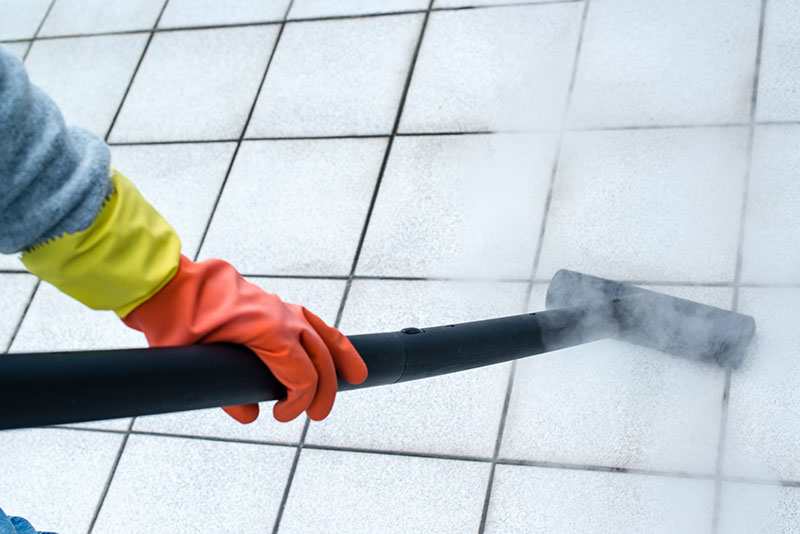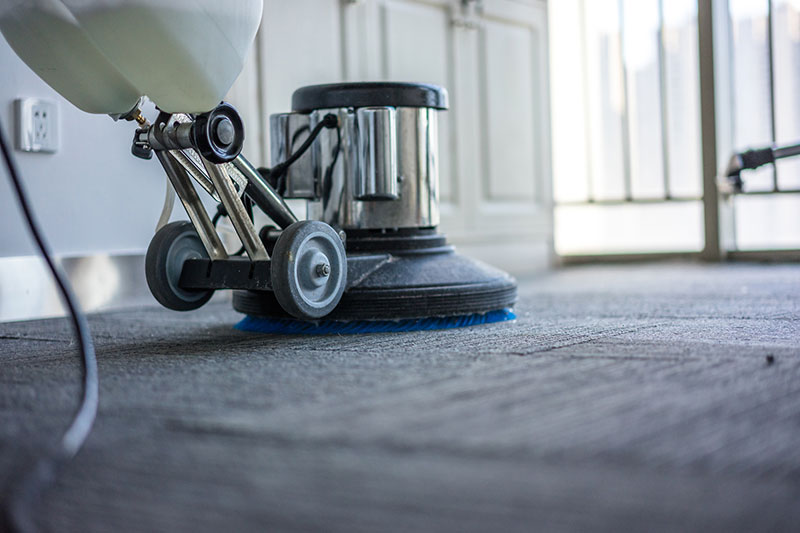Advertisement
Well-maintained and clean carpets and tiles are essential for a healthy living environment. A clean home is a happy home. Therefore, cleaning your floors should be among your top priorities.
Flooring attracts and traps dust, dirt, bacteria, insects, and allergens that can make your environment filthy. Also, liquid spills can result in a foul smell, especially for floor rags. On the other hand, wetness can also be dangerous on tiles as they become slippery, increasing the risk of falling.
Lastly, a dirty floor catalyzes respiratory and other major health problems. But with simple tips and techniques, you can easily avoid all these problems. This article shares essential tips on effectively cleaning your carpets and tiles.
Carpet Cleaning Tips Every Homeowner Should Know
Other than the negative effect of dirty tiles and carpets highlighted above, a messy floor can be pretty embarrassing for your home. That is why you should take the initiative to clean it. You can either seek expert help like these Summit carpet cleaning services or you can do it yourself. Today’s piece focuses on the latter. Here is a guide to help keep your carpets clean:
- Clean Spills And Stains Immediately
When spills occur, don’t wait too long. They can cause stains on your carpet. Spray a cleaning solution on a cleaning absorbent, then press it on the affected area while the spill is fresh. Don’t rub the absorbent since the stain can spread further.
Cleaning spills immediately is essential because it prevents them from being absorbed and becoming permanent stains on the carpet. Ignoring spills on the carpet allows them to get absorbed, making them unattractive and embarrassing. You will also prevent germ buildup, which can result in health issues. Also, some spills, such as soup, wine, and milk, can cause a pungent smell if you leave them too long.
Spot cleaning can be effective in removing spills. Use a damp piece of paper towel or cloth to remove excess debris that has built up on the surface. Then, apply a small amount of carpet cleaning solution to the area and gently scrub it with a brush. Finally, rinse the spot with a damp cloth and let it dry.
- Thorough Vacuum Cleaning
First, choose the right vacuum cleaner for your mat. If you’re unsure which one to use, consult your carpet manufacturer to determine the right machine.
Before using a vacuum cleaner, it is advisable to do manual cleaning first. You need to dust every room in your house, including your furniture, drapes or curtains, and walls, among other things. It prevents dust from settling on the floor after you have vacuumed and also ensures you clean out every particle in the room. Furthermore, it allows you to remove big particles that are too big to be vacuumed.
When cleaning, ensure you use slow motions in all directions—back and forth and side by side—to suck up all the dirt and cover a huge area. Please pay special attention to high-traffic areas since they hold more grime. After that, brush your mat with a soft-bristled brush to restore its original texture. Use a cleaning solution to remove any stubborn stains that could still be on the floor. Then re-vacuum to remove the solution. Let it dry completely before walking on it.
Depending on your carpet type and how much foot traffic it gets, you should vacuum your carpets at least once a week. For high-traffic areas, every two to three days is preferable. If you have pets, vacuum your carpets more often to remove pet hair and dander.
- Use A Steam-Cleaner
Ensure you calibrate the equipment properly for the correct temperature and pressure settings. Next, start by cleaning the edges and corners of the carpet, then move to the center. Slowly and steadily move the machine north-south and east-west to cover all areas. To finish, use a dry cloth or towel to absorb any remaining moisture from the carpet, and let it dry completely. Always remember to clean while barefoot since shoes can leave marks.
- Use A DIY Deodorizer
A DIY carpet deodorizer is a homemade solution many people use to remove odors from carpets. It is made from natural components like baking soda, vinegar, and essential oils. Mix baking soda and white vinegar in a bowl to make one. Add drops of your favorite essential oil (such as lavender) for a pleasant scent. Mix these ingredients to form a paste which you can then apply and sit overnight before vacuuming the area.
- Keep Dirt Away From Carpeted Areas
Place entry mats at all entrances of your home to help trap dirt and debris from entering the home and reduce the amount of dirt on your carpets. You can also place furniture protectors underneath your furniture to prevent debris and dirt from entering your carpets.
How to Clean Tiles: Home-based Guide

With carpet cleaning tips already covered, you may now focus on tile cleaning. Cleaning tiles can be trickier, as there are many types of tiles, and each may require a different cleaning method. To help you out, here is a home-based guide on cleaning tiles. First, identify your tile type, select the appropriate cleaning product, and follow the instructions.
- Sweep And Vacuum Loose Debris
Your tiles may look clean but always have dust you can’t see. Please note that some brooms may not be effective in cleaning, so you may need a soft broom or brush. Use a vacuum cleaner for areas that are hard to reach. Regular sweeping and vacuuming can keep the tiles looking their best and extend the life of your tile flooring.
- Use A Neutral PH Solution
First, pH-neutral cleaners are gentle and don’t cause any damage to floors. They are also easy to wash away, meaning they don’t leave any residue that may attract more grime. They are also pet-friendly since they don’t contain any harsh chemicals. Some examples of these cleaners include mild dish soap, baking soda, white vinegar, mild detergents, and rubbing alcohol.
Some cleaning solutions usually come with instructions to follow, so be sure to follow them. Mix the solution with warm water. The solution should be less than the water since more of it can make rinsing difficult and can also make the tiles slippery. Let it settle for a few minutes, scrub the tiles, and then use a microfiber mop. Without the solution, change your water to rinse off the cleaner this time.
- Use The 2-Bucket System
When mopping tiles, it is easy for germs to spread further, especially if you are using the same water throughout. The 2-bucket system, or more depending on the size of your floor, can help prevent the spread of dirt. Fill one bucket with your cleaning solution and warm water and the other bucket(s) with pure water. The more you change your water, the cleaner your tiles will become. You may also need to have two mops: one for mopping with the solution and the other for rinsing.
- Use Distilled Water
Distilled water is preferable for cleaning tiles because it does not contain minerals that can leave deposits on the surface of the tiles. These deposits can attract dirt and grime, leading to a dirt and bacteria buildup that can discolor and damage the tiles. Additionally, distilled water does not contain chlorine which can damage the tiles’ surface.
- Use A Tile-Friendly Mop
The right mop makes the job less tedious and frustrating. Microfiber mops are the best for cleaning tiles since they are soft, easily absorbent, and don’t cause any damage. They are made of a synthetic material much finer than cotton, allowing them to get into hard-to-access- areas that a cotton mop can’t.
Steam mops are also a good option for disinfecting your floor. Ensure your tank has enough water, then heat it to high temperatures. Then, attach the mop to the foot of the steam cleaner. Only use the steamer’s water and the all-direction motion method when cleaning. Consider the size of your mop to ensure it can reach all the nooks and crannies.
- Watch Out For Soap Residues
Soap residues can cause long-term damage to tile flooring, as they can build up over time and cause discoloration. A mop with a material resistant to soap residue is more effective as it maintains the tile’s top condition.
- Always Clean The Grout
Make a batch of homemade deodorizers like the one mentioned above. Apply it to the grout using a medium-bristle brush or an old toothbrush. Mix equal amounts of white vinegar with warm water, spray it on the area, let it sit for at least five minutes, and then scrub it with a stiff brush. Please avoid using vinegar on unsealed grout. Instead, you can only use a baking soda solution and be gentle while scrubbing.
For moderate stains, use hydrogen peroxide, which is safe for sealed and unsealed dregs. You can also apply oxygen bleach for tougher stains and let it stay for 15 minutes, then rinse it off. Ensure your room is well-ventilated before using these drugstore grout cleaners.
Final Note
The above guidelines can help you maintain the condition of your tile and carpet flooring while promoting a healthy living environment. Make sure you mop your tiles at least once a week and grout monthly. Also, vacuum your carpet at least twice a week and get professional cleaning once or twice a year.

